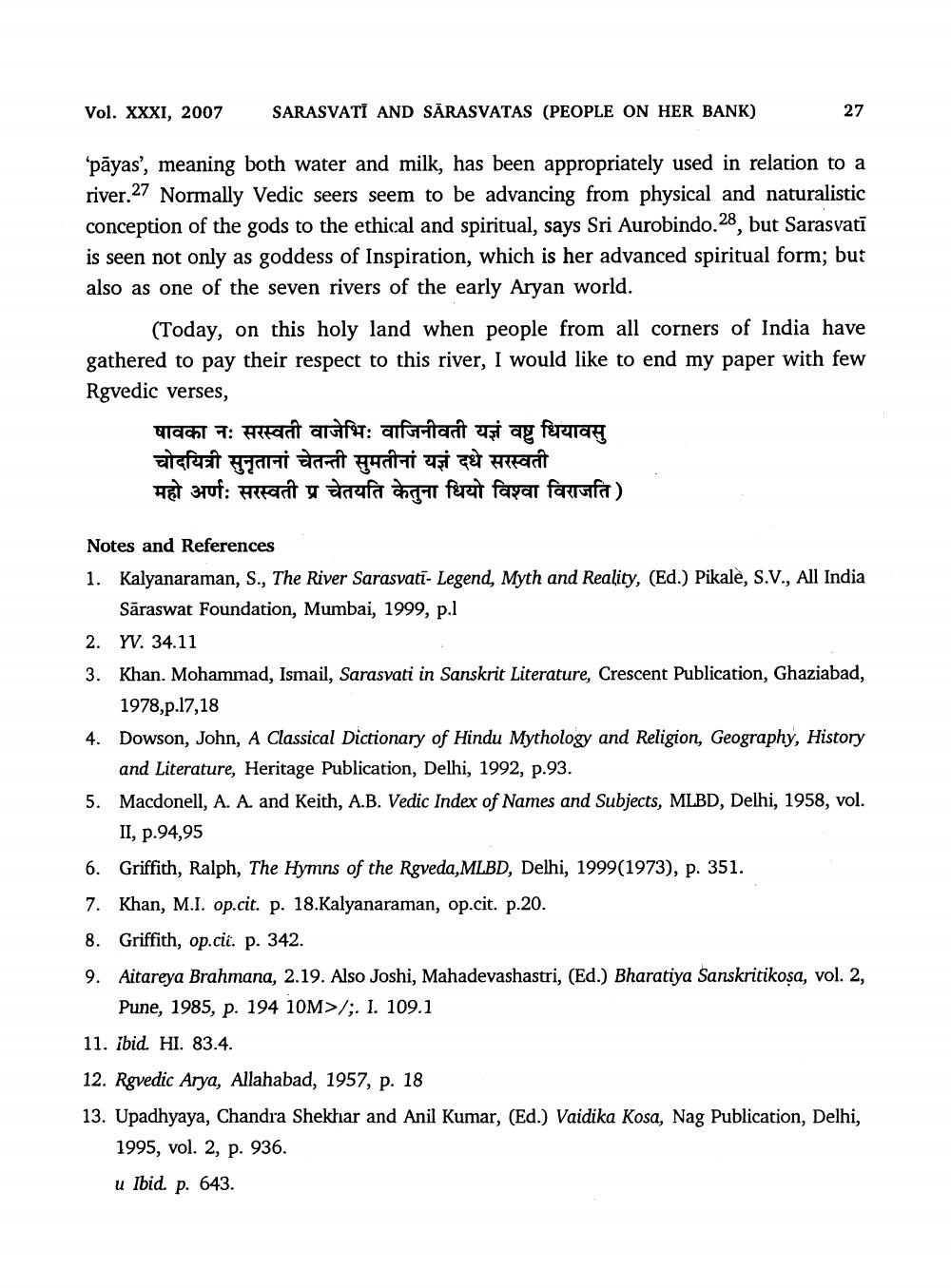________________
Vol. XXXI, 2007
SARASVATI AND SĀRASVATAS (PEOPLE ON HER BANK)
27
pāyas', meaning both water and milk, has been appropriately used in relation to a river.27 Normally Vedic seers seem to be advancing from physical and naturalistic conception of the gods to the ethical and spiritual, says Sri Aurobindo.28, but Sarasvati is seen not only as goddess of Inspiration, which is her advanced spiritual form; but also as one of the seven rivers of the early Aryan world.
(Today, on this holy land when people from all corners of India have gathered to pay their respect to this river, I would like to end my paper with few Rgvedic verses,
षावका न: सरस्वती वाजेभिः वाजिनीवती यज्ञं वष्ट धियावसु चोदयित्री सुनृतानां चेतन्ती सुमतीनां यज्ञं दधे सरस्वती महो अर्णः सरस्वती प्र चेतयति केतुना धियो विश्वा विराजति)
O
Notes and References 1. Kalyanaraman, S., The River Sarasvati- Legend, Myth and Reality, (Ed.) Pikale, S.V., All India
Sāraswat Foundation, Mumbai, 1999, p.1 2. YV. 34.11 3. Khan. Mohammad, Ismail, Sarasvati in Sanskrit Literature, Crescent Publication, Ghaziabad,
1978,p.17,18 4. Dowson, John, A Classical Dictionary of Hindu Mythology and Religion, Geography, History
and Literature, Heritage Publication, Delhi, 1992, p.93. 5. Macdonell, A. A. and Keith, A.B. Vedic Index of Names and Subjects, MLBD, Delhi, 1958, vol.
II, p.94,95 6. Griffith, Ralph, The Hymns of the Rgveda, MLBD, Delhi, 1999(1973), p. 351. 7. Khan, M.I. op.cit. p. 18.Kalyanaraman, op.cit. p.20. 8. Griffith, op.cit. p. 342. 9. Aitareya Brahmana, 2.19. Also Joshi, Mahadevashastri, (Ed.) Bharatiya Sanskritikosa, vol. 2,
Pune, 1985, p. 194 10M>/;. I. 109.1 11. ibid. HI. 83.4. 12. Rgvedic Arya, Allahabad, 1957, p. 18 13. Upadhyaya, Chandra Shekhar and Anil Kumar, (Ed.) Vaidika Kosa, Nag Publication, Delhi,
1995, vol. 2, p. 936. u Ibid. p. 643.




